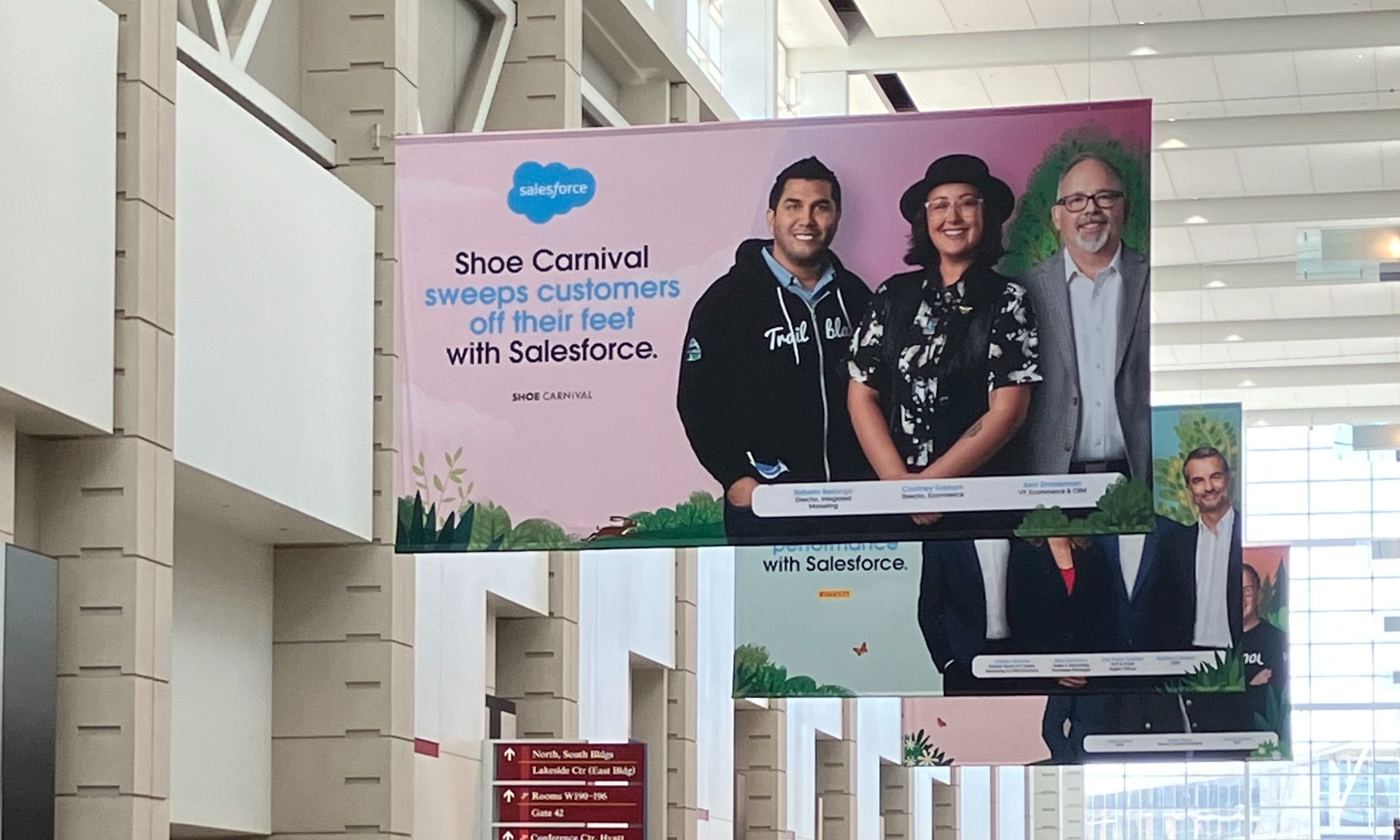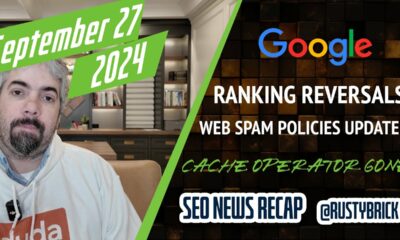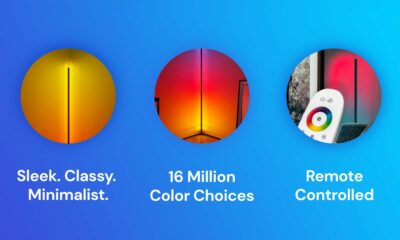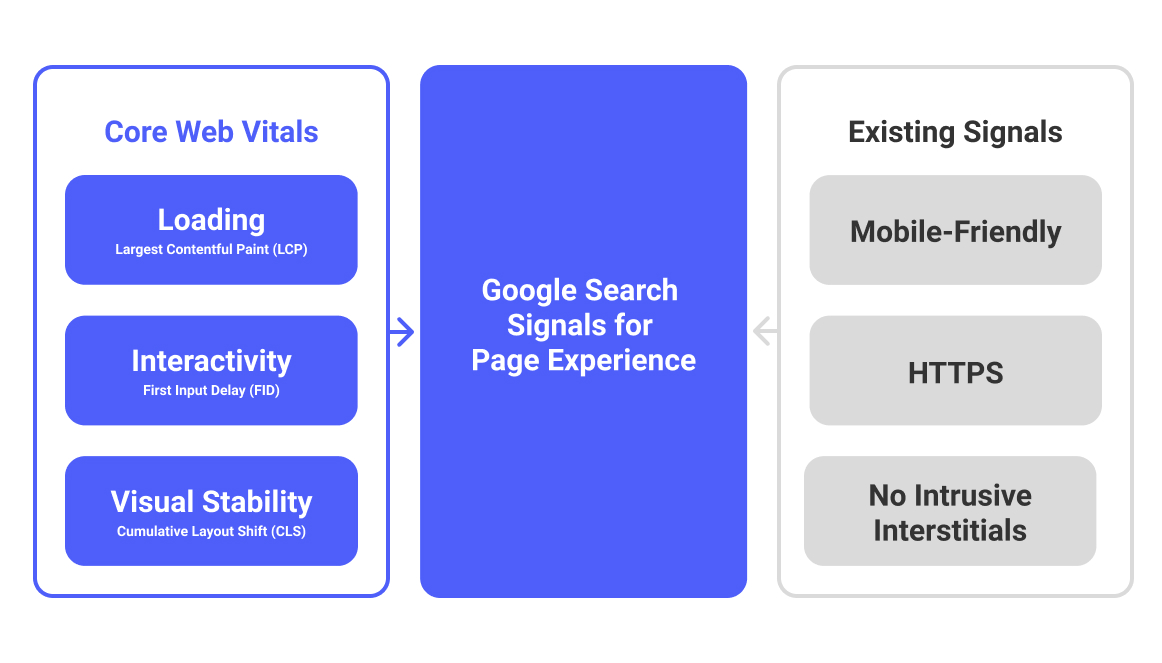MARKETING
35 Unique Ways to Increase Your Website Traffic

When it comes to web traffic, the more, the merrier.
Part of your job as a marketer is to come up with new and inventive ways to drive more eyes to your site. This has a couple of big benefits for any business, including ramping up brand awareness and sales as well as growing your email subscriber list.
The connection between web traffic and overall email marketing success is a big one, with the more visitors that you can bring to your site equaling more opportunities to sign them up for your emails and make stronger, more impactful connections.
We have lots of advice on how to capture contacts once they make it onto your site, but how do you get them there in the first place? Keep reading for 35 creative ways that you can increase website traffic, then get to work tracking visitor behavior so that you can put website forms in optimal spots.
How to Track Website Traffic
Before we get into the specifics of how to increase website traffic, let’s go over how to figure out where you already stand.
The first thing to be aware of is that there are three basic types of web traffic:
- Paid traffic – Web traffic that comes from paid ads, such as pay-per-click campaigns and sponsored social media posts.
- Organic traffic – Web traffic that comes from earned clicks, specifically unpaid search engine links.
- Referral traffic – Web traffic that comes from a link to your site on another web page.
There’s also email traffic, which is web traffic that comes from links in your email marketing outreach.
All of these types of traffic are important, though you may not rely on all of them equally. For example, some brands may devote a huge chunk of their marketing budget to paid traffic, while others prefer to focus more on organic and in-house opportunities like blog posts and emails.
There’s no wrong or right way to prioritize where your traffic comes from (it’s all about what works for your specific brand, budget, and objectives). There are, however, some best practices for tracking it.
Probably the best — and most popular — web tracking tool is Google Analytics. Not only does Google Analytics give you a snapshot of how many visitors are coming to your page and what they’re doing once they get there, it also makes it a cinch to see where that traffic is coming from.
There are other web traffic tracking tools out there as well, including both free and paid platforms. These include SimilarWeb, Bitly, and Open Web Analytics.
Digging into your data around web traffic is essential, both for knowing where you stand and for knowing what strategies are working out the best for your brand. With that in mind, let’s look at what those strategies might be, with unique ways to increase web traffic and bring more visitors to your page and more subscribers to your email contact list.
35 Ways to Increase Website Traffic
More traffic is always a good thing. Check out this list of traffic-boosting tips and find some new ideas for helping make your site the place to be.
- Invest in SEO. The top three Google search results get 75.1% of all clicks. Put time, effort, and money into an SEO strategy so you can be one of them.
- Get social. Stay active on social media to increase engagement and followers and promote content on your website.
- Build backlinks. Partner with other publications to share your insight and content on their page — and get a link back to your site in return.
- Include internal links. Keep attention once you’ve got it by using internal links to drive visitors to other important, informative pages on your site.
- Update your website. Make sure that you’re constantly adding to your site with new posts and pages. This will ensure your site continues to grab and hold the attention of visitors and bring them back for more.
- Run contests and promotions. Run a giveaway that requires people to visit your website in order to submit an entry.
- Write guest posts. Publish original content on sites like Medium to reach a bigger audience and get them interested in what you’re doing.
Mark Schenker from The Glorious Company, a copywriting and content marketing agency, uses a guest-posting campaign to get valuable backlinks back to his site. Mark uses anchor text that corresponds to keywords his agency wants to rank for, such as “copywriting agency” or “content marketing agency.”
Using keywords effectively will help the content you place on these sites rank higher in search results, which increases the likelihood that searchers will click on the content, read it, and click the links leading back to your site.
- Pay for ads. Set aside some of your budget for PPC ads and other paid search opportunities.
- Include calls to action in your emails. Aside from just sharing information, use your emails as a place to encourage (and maybe even incentivize) visits to your site. Even though your emails are being sent to people who have already opted in to receive them, people share emails with their colleagues and friends who may not already be subscribed.
- Connect with influencers. Invest in an influencer marketing strategy by having micro or nano influencers share your products, services, and content, sharing your brand with their fans.
- Get reviews. Ask existing customers to leave reviews for your company through sites like Google and Yelp.
But don’t stop there. Do what Marco Maric from Clockify, a time-tracking software, does and tie this approach in with your SEO strategy. They read every customer review and tailor their content strategy to target the specific problems and use cases their customers are talking about.
By focusing on customer issues and needs, they’re able to ensure the content they create capitalizes on the right keywords and is informative and helpful to their audience.
- Host a webinar. Put together a webinar and host both the signup and the link on your site. Consider partnering up with another brand on the endeavor to tap into their audience too. However, make sure it’s a brand that has a similar audience base as yours, so the new leads you acquire are qualified and interested in what you have to offer.
- Write an ebook. Publish an original ebook on your site and gate it, so people have to provide their contact information in order to download it. Make sure you include a box to opt-in to your emails or provide a disclaimer that explains they’ll automatically be opted in. Promote it on your social channels, so it gets more exposure.
- Join Facebook Groups. Aside from just general Facebook posts, join one or more groups to connect with a new audience of potential site visitors.
- Lend expertise. Make yourself available as an expert commentator for blog posts and articles and get your name — and a link to your site — in more press.
- Apply for awards. If you’re hitting it out of the park with content or products, apply for awards that increase brand recognition and authority.
- Publish press releases. Spread the news on company updates through syndicated sites like PRWeb and PR Newswire.
- Post to LinkedIn. Use LinkedIn as a platform to share original content, as well as company news and other relevant info.
- Test your website. Double-check you’re not putting forward any unintentional barriers to better web traffic, such as slow loading times or broken links.
- Try out video marketing. Produce original videos and then share them (along with site links) on YouTube and other social media channels.
- Get in on trending topics. Use a site like Buzzsumo to find out what your competitors are talking about and then create content that adds your own voice to the conversation.
- Become part of the community. Join communities like Reddit, Quora, and public Slack groups and find and engage with more of your target audience.
- Update old content. Breathe new life — and new search potential — into existing posts by updating old content with new keywords and links, as well as more up-to-date information. This will help that contents’ ranking so it can generate more site traffic.
- Get rid of duplicate content. Search engines don’t like when you have multiple posts on the same topic, so merge them into one master post instead.
- Find guest contributors. Make it easy for others to write for your site or contribute to your content. They’ll almost certainly share that link with their own audience which will increase exposure and cast a wider net for your efforts. Try creating a co-branded opportunities page where people can contribute thoughts and input or pitch content for your site.
- Start a podcast. Podcasts are becoming increasingly effective tools for outreach. Start your own, or apply to become a guest on an existing broadcast.
- Create surveys and polls. Send surveys to your audience or create polls on various topics to help you comprise data that others will find useful. Proprietary data is great because people can’t get it just anywhere else, and they’ll not only share it but link to where it came from in their content.
- Make technical website improvements. Search engines, as well as visitors, prefer websites that work better and faster and that are more accessible for all users. Make sure your site is optimized and loads quickly, as that will create a pleasant user experience which can encourage repeat traffic.
- Don’t neglect voice search. More and more visitors are conducting searches through voice assistants like Alexa, so ensure your keyword and content strategy is optimized for voice search.
- Grab that featured snippet spot. The featured snippet on Google — a.k.a. position zero — is a great place to be. Answer questions and focus on your keyword strategy in order to get there.
- Optimize your emails. Web traffic is crucial for email marketing and vice versa. Segmenting your audience and sending out a regular newsletter are two of many ways you can be sure to attract people to your content and links.
- Create automated email workflows. Connect with your audience when you’re most likely to grab their attention, such as when they first subscribe to your emails or when they abandon their cart.
- Run a referral program. Incentivize referrals so that your current happy customers bring others to your page.
- Post a Twitter thread. Turn content into a shareable Twitter thread, with links to your site throughout.
- Attend conferences. Network in-person to put a human face to your brand and forge connections that encourage web visits.
Pick and choose a few things to try off this list, then tweak as you go based on what’s working. Then as your traffic grows, you can take targeted steps to turn that traffic into email growth — a win-win on all fronts!
MARKETING
YouTube Ad Specs, Sizes, and Examples [2024 Update]
![YouTube Ad Specs, Sizes, and Examples [2024 Update] YouTube Ad Specs, Sizes, and Examples](https://articles.entireweb.com/wp-content/uploads/2024/06/YouTube-Ad-Specs-Sizes-and-Examples.jpg)
Introduction
With billions of users each month, YouTube is the world’s second largest search engine and top website for video content. This makes it a great place for advertising. To succeed, advertisers need to follow the correct YouTube ad specifications. These rules help your ad reach more viewers, increasing the chance of gaining new customers and boosting brand awareness.
Types of YouTube Ads
Video Ads
- Description: These play before, during, or after a YouTube video on computers or mobile devices.
- Types:
- In-stream ads: Can be skippable or non-skippable.
- Bumper ads: Non-skippable, short ads that play before, during, or after a video.
Display Ads
- Description: These appear in different spots on YouTube and usually use text or static images.
- Note: YouTube does not support display image ads directly on its app, but these can be targeted to YouTube.com through Google Display Network (GDN).
Companion Banners
- Description: Appears to the right of the YouTube player on desktop.
- Requirement: Must be purchased alongside In-stream ads, Bumper ads, or In-feed ads.
In-feed Ads
- Description: Resemble videos with images, headlines, and text. They link to a public or unlisted YouTube video.
Outstream Ads
- Description: Mobile-only video ads that play outside of YouTube, on websites and apps within the Google video partner network.
Masthead Ads
- Description: Premium, high-visibility banner ads displayed at the top of the YouTube homepage for both desktop and mobile users.
YouTube Ad Specs by Type
Skippable In-stream Video Ads
- Placement: Before, during, or after a YouTube video.
- Resolution:
- Horizontal: 1920 x 1080px
- Vertical: 1080 x 1920px
- Square: 1080 x 1080px
- Aspect Ratio:
- Horizontal: 16:9
- Vertical: 9:16
- Square: 1:1
- Length:
- Awareness: 15-20 seconds
- Consideration: 2-3 minutes
- Action: 15-20 seconds
Non-skippable In-stream Video Ads
- Description: Must be watched completely before the main video.
- Length: 15 seconds (or 20 seconds in certain markets).
- Resolution:
- Horizontal: 1920 x 1080px
- Vertical: 1080 x 1920px
- Square: 1080 x 1080px
- Aspect Ratio:
- Horizontal: 16:9
- Vertical: 9:16
- Square: 1:1
Bumper Ads
- Length: Maximum 6 seconds.
- File Format: MP4, Quicktime, AVI, ASF, Windows Media, or MPEG.
- Resolution:
- Horizontal: 640 x 360px
- Vertical: 480 x 360px
In-feed Ads
- Description: Show alongside YouTube content, like search results or the Home feed.
- Resolution:
- Horizontal: 1920 x 1080px
- Vertical: 1080 x 1920px
- Square: 1080 x 1080px
- Aspect Ratio:
- Horizontal: 16:9
- Square: 1:1
- Length:
- Awareness: 15-20 seconds
- Consideration: 2-3 minutes
- Headline/Description:
- Headline: Up to 2 lines, 40 characters per line
- Description: Up to 2 lines, 35 characters per line
Display Ads
- Description: Static images or animated media that appear on YouTube next to video suggestions, in search results, or on the homepage.
- Image Size: 300×60 pixels.
- File Type: GIF, JPG, PNG.
- File Size: Max 150KB.
- Max Animation Length: 30 seconds.
Outstream Ads
- Description: Mobile-only video ads that appear on websites and apps within the Google video partner network, not on YouTube itself.
- Logo Specs:
- Square: 1:1 (200 x 200px).
- File Type: JPG, GIF, PNG.
- Max Size: 200KB.
Masthead Ads
- Description: High-visibility ads at the top of the YouTube homepage.
- Resolution: 1920 x 1080 or higher.
- File Type: JPG or PNG (without transparency).
Conclusion
YouTube offers a variety of ad formats to reach audiences effectively in 2024. Whether you want to build brand awareness, drive conversions, or target specific demographics, YouTube provides a dynamic platform for your advertising needs. Always follow Google’s advertising policies and the technical ad specs to ensure your ads perform their best. Ready to start using YouTube ads? Contact us today to get started!
MARKETING
Why We Are Always ‘Clicking to Buy’, According to Psychologists

Amazon pillows.
MARKETING
A deeper dive into data, personalization and Copilots

Salesforce launched a collection of new, generative AI-related products at Connections in Chicago this week. They included new Einstein Copilots for marketers and merchants and Einstein Personalization.
To better understand, not only the potential impact of the new products, but the evolving Salesforce architecture, we sat down with Bobby Jania, CMO, Marketing Cloud.
Dig deeper: Salesforce piles on the Einstein Copilots
Salesforce’s evolving architecture
It’s hard to deny that Salesforce likes coming up with new names for platforms and products (what happened to Customer 360?) and this can sometimes make the observer wonder if something is brand new, or old but with a brand new name. In particular, what exactly is Einstein 1 and how is it related to Salesforce Data Cloud?
“Data Cloud is built on the Einstein 1 platform,” Jania explained. “The Einstein 1 platform is our entire Salesforce platform and that includes products like Sales Cloud, Service Cloud — that it includes the original idea of Salesforce not just being in the cloud, but being multi-tenancy.”
Data Cloud — not an acquisition, of course — was built natively on that platform. It was the first product built on Hyperforce, Salesforce’s new cloud infrastructure architecture. “Since Data Cloud was on what we now call the Einstein 1 platform from Day One, it has always natively connected to, and been able to read anything in Sales Cloud, Service Cloud [and so on]. On top of that, we can now bring in, not only structured but unstructured data.”
That’s a significant progression from the position, several years ago, when Salesforce had stitched together a platform around various acquisitions (ExactTarget, for example) that didn’t necessarily talk to each other.
“At times, what we would do is have a kind of behind-the-scenes flow where data from one product could be moved into another product,” said Jania, “but in many of those cases the data would then be in both, whereas now the data is in Data Cloud. Tableau will run natively off Data Cloud; Commerce Cloud, Service Cloud, Marketing Cloud — they’re all going to the same operational customer profile.” They’re not copying the data from Data Cloud, Jania confirmed.
Another thing to know is tit’s possible for Salesforce customers to import their own datasets into Data Cloud. “We wanted to create a federated data model,” said Jania. “If you’re using Snowflake, for example, we more or less virtually sit on your data lake. The value we add is that we will look at all your data and help you form these operational customer profiles.”
Let’s learn more about Einstein Copilot
“Copilot means that I have an assistant with me in the tool where I need to be working that contextually knows what I am trying to do and helps me at every step of the process,” Jania said.
For marketers, this might begin with a campaign brief developed with Copilot’s assistance, the identification of an audience based on the brief, and then the development of email or other content. “What’s really cool is the idea of Einstein Studio where our customers will create actions [for Copilot] that we hadn’t even thought about.”
Here’s a key insight (back to nomenclature). We reported on Copilot for markets, Copilot for merchants, Copilot for shoppers. It turns out, however, that there is just one Copilot, Einstein Copilot, and these are use cases. “There’s just one Copilot, we just add these for a little clarity; we’re going to talk about marketing use cases, about shoppers’ use cases. These are actions for the marketing use cases we built out of the box; you can build your own.”
It’s surely going to take a little time for marketers to learn to work easily with Copilot. “There’s always time for adoption,” Jania agreed. “What is directly connected with this is, this is my ninth Connections and this one has the most hands-on training that I’ve seen since 2014 — and a lot of that is getting people using Data Cloud, using these tools rather than just being given a demo.”
What’s new about Einstein Personalization
Salesforce Einstein has been around since 2016 and many of the use cases seem to have involved personalization in various forms. What’s new?
“Einstein Personalization is a real-time decision engine and it’s going to choose next-best-action, next-best-offer. What is new is that it’s a service now that runs natively on top of Data Cloud.” A lot of real-time decision engines need their own set of data that might actually be a subset of data. “Einstein Personalization is going to look holistically at a customer and recommend a next-best-action that could be natively surfaced in Service Cloud, Sales Cloud or Marketing Cloud.”
Finally, trust
One feature of the presentations at Connections was the reassurance that, although public LLMs like ChatGPT could be selected for application to customer data, none of that data would be retained by the LLMs. Is this just a matter of written agreements? No, not just that, said Jania.
“In the Einstein Trust Layer, all of the data, when it connects to an LLM, runs through our gateway. If there was a prompt that had personally identifiable information — a credit card number, an email address — at a mimum, all that is stripped out. The LLMs do not store the output; we store the output for auditing back in Salesforce. Any output that comes back through our gateway is logged in our system; it runs through a toxicity model; and only at the end do we put PII data back into the answer. There are real pieces beyond a handshake that this data is safe.”
-

 WORDPRESS3 days ago
WORDPRESS3 days agoWordPress biz Automattic details WP Engine deal demands • The Register
-
SEARCHENGINES5 days ago
Daily Search Forum Recap: September 30, 2024
-

 SEARCHENGINES6 days ago
SEARCHENGINES6 days agoGoogle Volatility With Gains & Losses, Updated Web Spam Policies, Cache Gone & More Search News
-

 SEO7 days ago
SEO7 days ago6 Things You Can Do to Compete With Big Sites
-
SEARCHENGINES4 days ago
Daily Search Forum Recap: October 1, 2024
-

 SEO6 days ago
SEO6 days agoAn In-Depth Guide For Businesses
-

 AFFILIATE MARKETING6 days ago
AFFILIATE MARKETING6 days agoNvidia CEO Jensen Huang Praises Nuclear Energy to Power AI
-

 AFFILIATE MARKETING6 days ago
AFFILIATE MARKETING6 days agoThis Minimalist Lamp Lets You Pick From 16 Million+ Lighting Colors for Maximum Productivity





